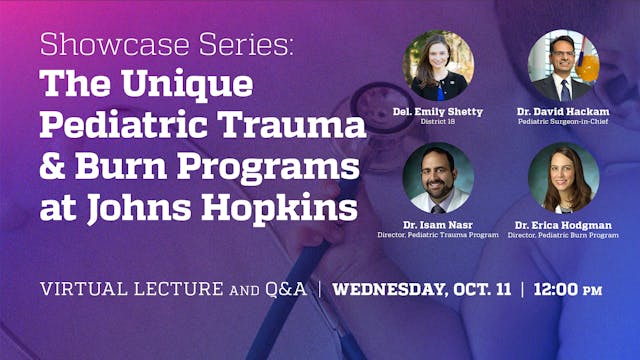Super-spreading Events: Lessons from India on Containment of COVID-19
Medicine & Public Health
•
59m
As global COVID-19 caseloads accelerate and winter approaches in the Northern Hemisphere, a study in India may have delivered some key insights into the disease’s transmission. The study, co-authored by Hopkins scientist Brian Wahl, leveraged India’s extensive contact tracing to conduct the world’s largest epidemiological study of the pandemic to date, shedding new light on the nature and impact of super-spreading events, how and why the majority of the world’s cases are occurring in low-resource contexts, and other significant findings. Join Dr. Jennifer Nuzzo, Senior Scholar at the Center for Health Security at the Johns Hopkins Bloomberg School of Public Health, for a conversation with Dr. Wahl and Dr. Sanjay Mehendale, Director of Research at PD Hinduja Hospital and Medical Research Center in Mumbai, on what we can learn from India about pandemic safety. To learn more, visit jhu.edu/hopkinsathome
Up Next in Medicine & Public Health
-
Smell Loss in COVID-19: Who Nose What...
Although sudden smell loss has long been a consequence of acute viral infections, this sudden sensory loss is a unique marker of the ongoing COVID-19 pandemic, with implications on disease tracking, pathophysiology, and potentially long-term consequences for the many of millions of persons infect...
-
Showcase Series: The Unique Pediatric...
Please join Del. Emily K. Shetty (District 18) as she leads a discussion with Dr. David Hackam, M.D., Ph.D. (Pediatric Surgeon-in-Chief, The Johns Hopkins Hospital-Bloomberg's Children Center), Dr. Isam Nasr (Director of Pediatric Trauma Program), and Dr. Erica Hodgman (Director, Pediatric Burn P...
-
Sex Differences in Stroke Recovery
There are many differences between the sexes, particularly regarding stroke prevention and recovery. Join Elisabeth Marsh, M.D., cerebrovascular neurologist and director of the comprehensive stroke center at Johns Hopkins Bayview Medical Center, as she explains differences in stroke etiology and ...



